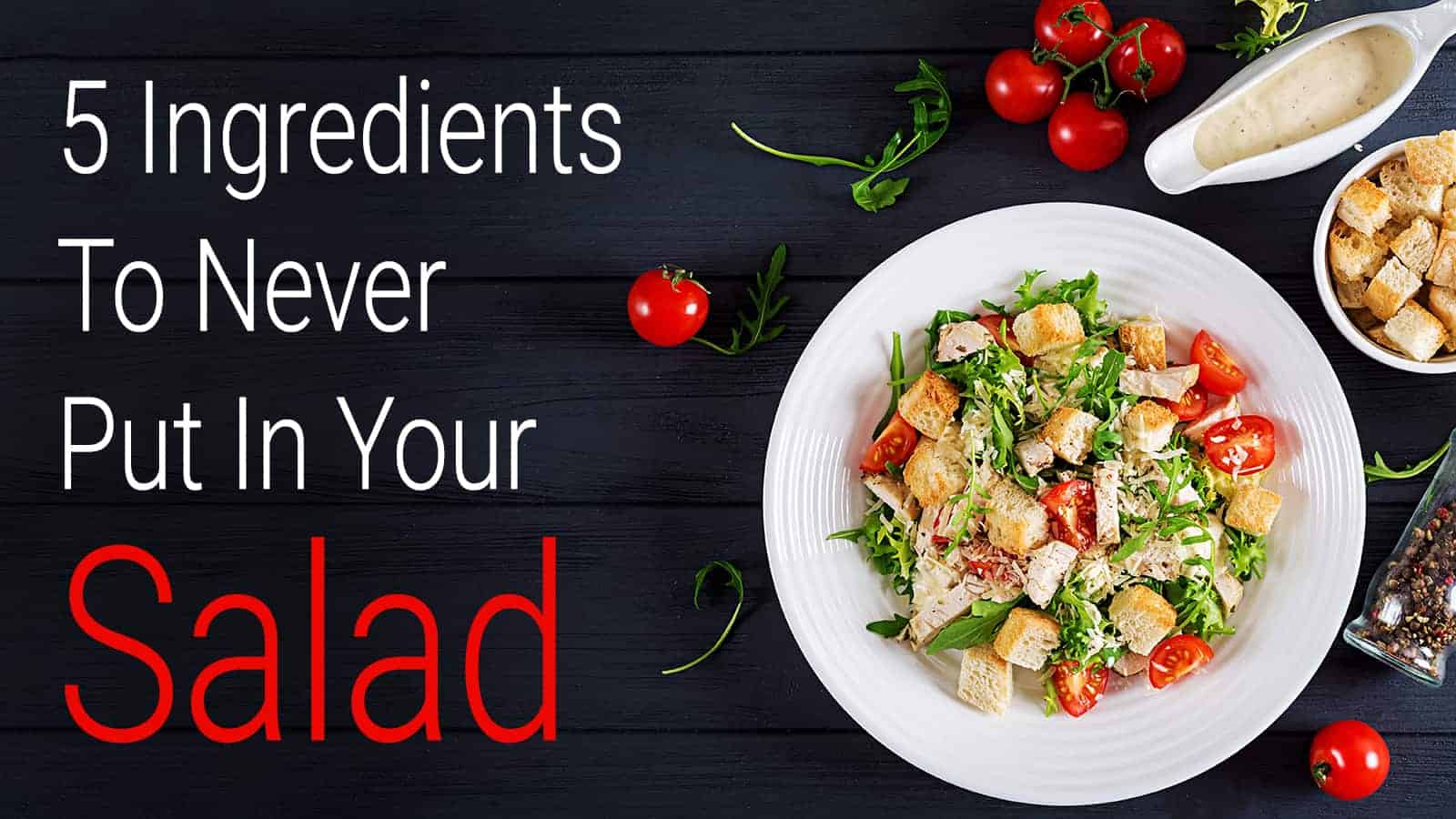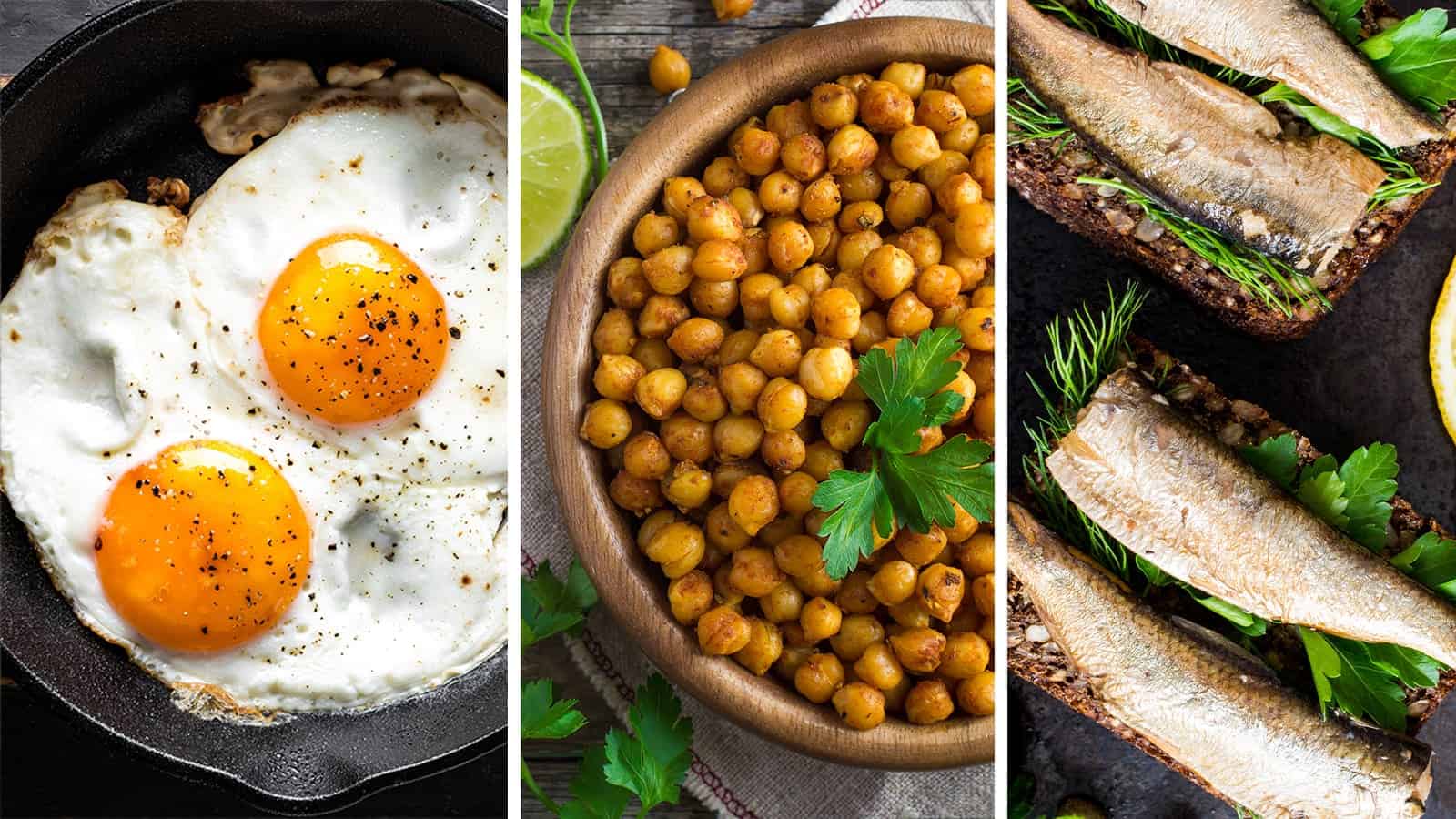Salads are often regarded as the healthiest meal option anywhere in the world. While simple salads with lettuce and tomatoes are quite healthy, things can get a little complicated once you add other elements to the salad.
The Truth About Healthy Salad Recipes
The truth of the matter is that when items like salad dressing and croutons are involved, the nutritional value of the salad may become compromised. With all these extra sugars, carbs, and calories, are salads still healthy?
Keep reading for five things you should avoid in any salad.
1. Ranch Dressing
What’s a salad without the iconic ranch dressing? According to experts, it’s healthier.
Creamy dressings like ranch and blue cheese are typically higher in calories and can quickly throw a wrench into any plans you have to eat a heart-healthy meal.
Calories and Fat
In just two ounces of ranch dressing, you’ll be consuming 188 calories. This is 9.4% the amount that you should consume on a daily basis (with a daily diet of 2,000 calories).
While one serving of this dressing adds a whammy of calories to your diet, you still have to account for whatever food you’re pairing it with. Additionally, each ranch dressing serving has 17.4 g of fat, which contributes generously to the 78g of fat recommended for your daily intake.
Carbs and Protein
Ranch dressing has 6.7 g in carbohydrates with each serving and 1.7 g of protein. While your specific meal plan may differ, generally speaking, the amount of protein and carbs offered in ranch dressing is negligible.
However, note that the protein and carbs in this dressing will not contribute to your energy levels or other bodily functions like enzyme or hormone production.
Ranch Dressing Alternatives
A rich, creamy, and healthier alternative for you salad dressing aficionados is avocado mixed with balsamic vinegar. With the avocado, you’ll take advantage of heart-healthy fat while getting the same satisfying flavor and texture you know and love.
Additionally, if you really love the creamy and thick dressings, try using Greek yogurt. You can play around with herbs and spices to get the flavor just right.
2. Croutons
Croutons help to give your salad texture, but do healthy salad recipes really call for croutons?
While you may not think twice about sprinkling these tiny treats all over your food, there may be more going into that crunch than you think.
Calories and Fats
Thirty grams of croutons contain 122 calories. This serving of croutons supplies about 6% of the daily caloric intake in the average diet of 2,000 calories per day.
Additionally, croutons provide about 1.5 g of dietary fiber, making up 6% of one’s recommended daily value.
When looking at the fats, croutons contain 2 g of fat, 1.3 of which are unsaturated fats and 0.5 of which are saturated. Additionally, you can find fatty acids in croutons; however, the amount is relatively low compared to the recommended daily value.
Carbs and Proteins
Croutons contain 22 carbohydrates and 3.6 g of protein.
A good source of vitamin B, croutons also deliver 0.3 mg of thiamin, 1.5 mg of niacin, and 0.1 mg of riboflavin. After that, there aren’t many benefits from eating croutons.
Crouton Alternatives
As croutons are low in nutritional value, think about using something that adds protein. A healthy alternative is nuts. Peanuts, walnuts, or pecans, whatever nut you choose, this crunchy addition is sure to be a lot healthier than croutons.
3. Candied Nuts
While you may be interested in adding nuts to your food, think carefully about the kind of nuts you’re using. If you add nuts to your healthy salad recipes, avoid any of the candied kind.
These candy coated nuts tend to be high in sugar and can really pack on the calories and fats. Oftentimes, their caramelized coating is due to brown sugar and butter.
Calories and Fats
When looking at maple cashews, one ounce contains 11 g of sugar and 10 g of fat. With sriracha almonds, you can expect 120 mg of sodium and 15 g of fat.
As most people assume that these nuts are a healthier alternative to croutons, they tend to use them more generously in salads. In a single serving, adding more than just a handful of candied nuts can do more harm than good. Instead of eating to lose weight, you’re actively consuming more sugar, salt, or fat than you realize.
Alternatives to Candied Nuts
Can’t get enough of the sweet and salty flavors? Try to go for lightly salted nuts like roasted chickpeas for an added crunch. If you’re in a pinch and are really craving something sweet, sprinkle half a teaspoon of honey on them.
Some of the best nut alternatives for your salads include cashews, walnuts, pistachios, and any other nut high in protein that has good fats.
4. Bacon and Bacon Bits
Bacon is another garnish favorite but it is by no means a healthier way to add crunch to your food. High in fat and sodium, bacon is an easy way to turn your healthy dish into a high-calorie meal.
Additionally, bacon bits are much worse than regular bacon as they have significantly more sodium. Oftentimes, these bacon bits aren’t even real meat; they tend to be made with additives, flours, and soy.
Calories and Fats
There’s a reason some people refer to bacon as the “candy of the meat industry.” The biggest benefit of bacon is its taste and possibly the protein. Packed with chemicals, salt, sugar, and other additives like nitrite and nitrate preservatives, bacon is wholly unhealthy and certainly not the best salad topping option.
One single serving of bacon contains high quantities of saturated fat. Moreover, it accounts for about a quarter of an individual’s daily sodium intake. In three slices, you can expect to consume 109 calories and 34 mg of cholesterol.
Carbs and Proteins
With 12 grams of protein and 0.6 g in carbohydrates, bacon’s saving grace is really its protein.
Bacon Alternatives
Still want that crunch and love the taste of bacon? Try vegan alternatives. With the latest invention of fake bacon, you get the same crunch you love without the calories and fats.
Additionally, you can switch out this fatty protein for something a little more healthy like grilled chicken or shrimp. The healthier these garnishes and extras are for you, the better.
If you can’t seem to let go of the bacon itself, consider a slightly healthier option like turkey bacon. While it won’t have quite the same sizzle as regular bacon, three slices only contain 100 calories and have 35% less saturated fat than regular bacon.
5. Fried Garnishes
Once you nix the bacon, it’s time to get rid of those garnishes. Everything from French fried onions to wonton strips should not be inside your healthy salad recipes. The fats in these toppings tend to add up and outweigh the benefits of the dish itself.
Why Avoid Fried Foods?
It’s important to be aware of fried foods mainly because of the process in which they are made. In addition to frying adding on extra calories, the oil used to fry the food may be unhealthy itself. Hydrogenated and partially hydrogenated oils use trans fats. These fats are man-made and designed to improve processed food’s shelf life.
These oils also increase the risk of stroke and heart disease while raising cholesterol. Oils also have a point at which their chemical structure will break down and toxic compounds will begin to form. At this point, these oils turn toxic. Any food fried in such oil will lead to a whole host of problems like high cholesterol.
While this may not be true for the fried garnishes you’re using, the truth is that it’s hard to tell what process your garnishes went through. Even if you fry these foods yourself, you’re still adding unnecessary fats to the process.
Alternatives to Fried Garnishes
Can’t get enough of the crunch in your salads? Consider raw vegetables like broccoli, carrots, celery, or bell peppers. This significantly boosts the nutritional content of the dish without adding unnecessary calories.
Final Thoughts on Healthy Salad Recipes
Healthy salads aren’t complicated to make. With your favorite head of lettuce or bunch of other leafy greens, you have the basics of a perfect meal. Try to keep things simple as you add in other elements to this dish.
Remember, if a food item doesn’t add something beneficial to your salad, it’s better to leave it out. Keep your body healthy by keeping your salads as nutrition-packed as possible.


















